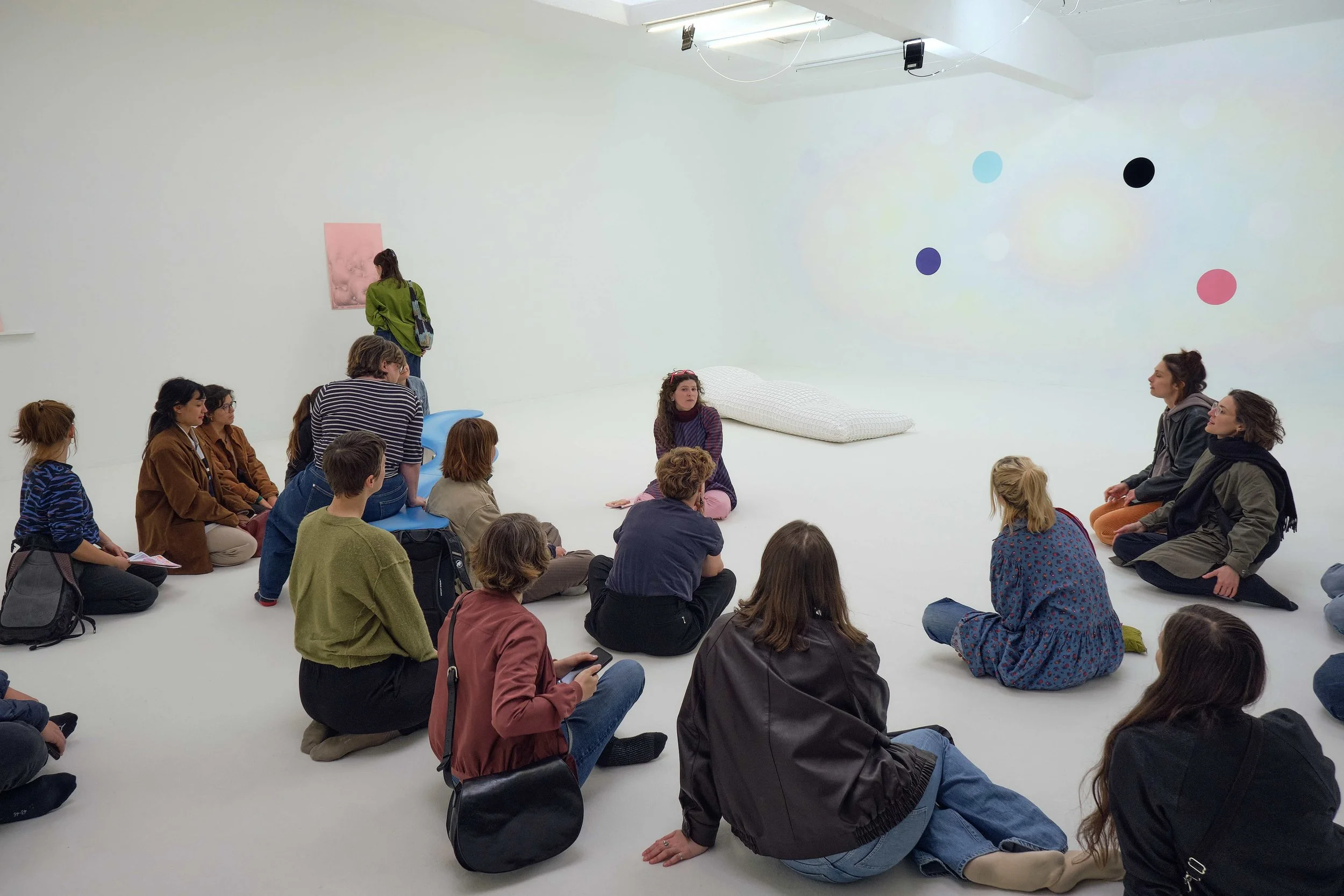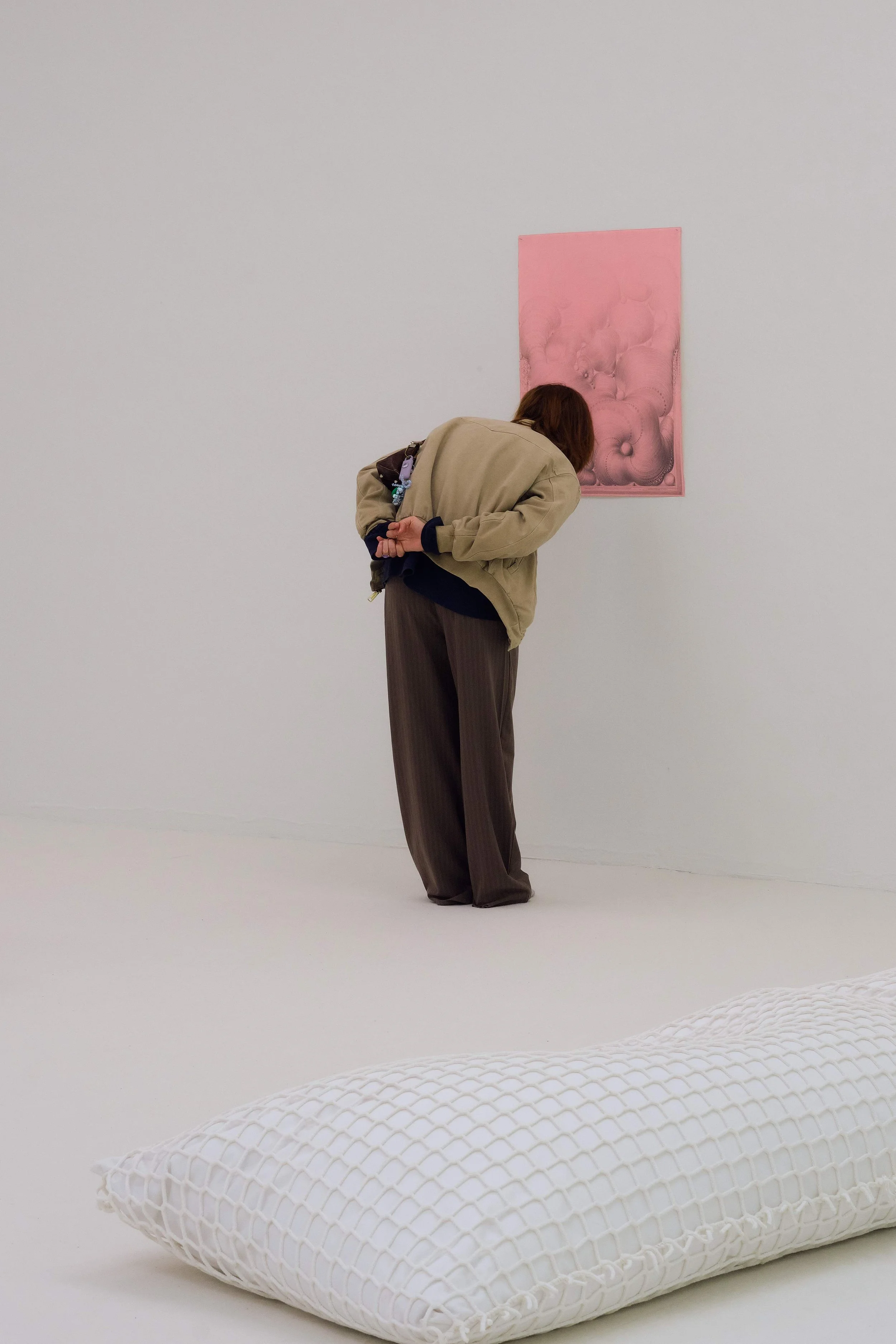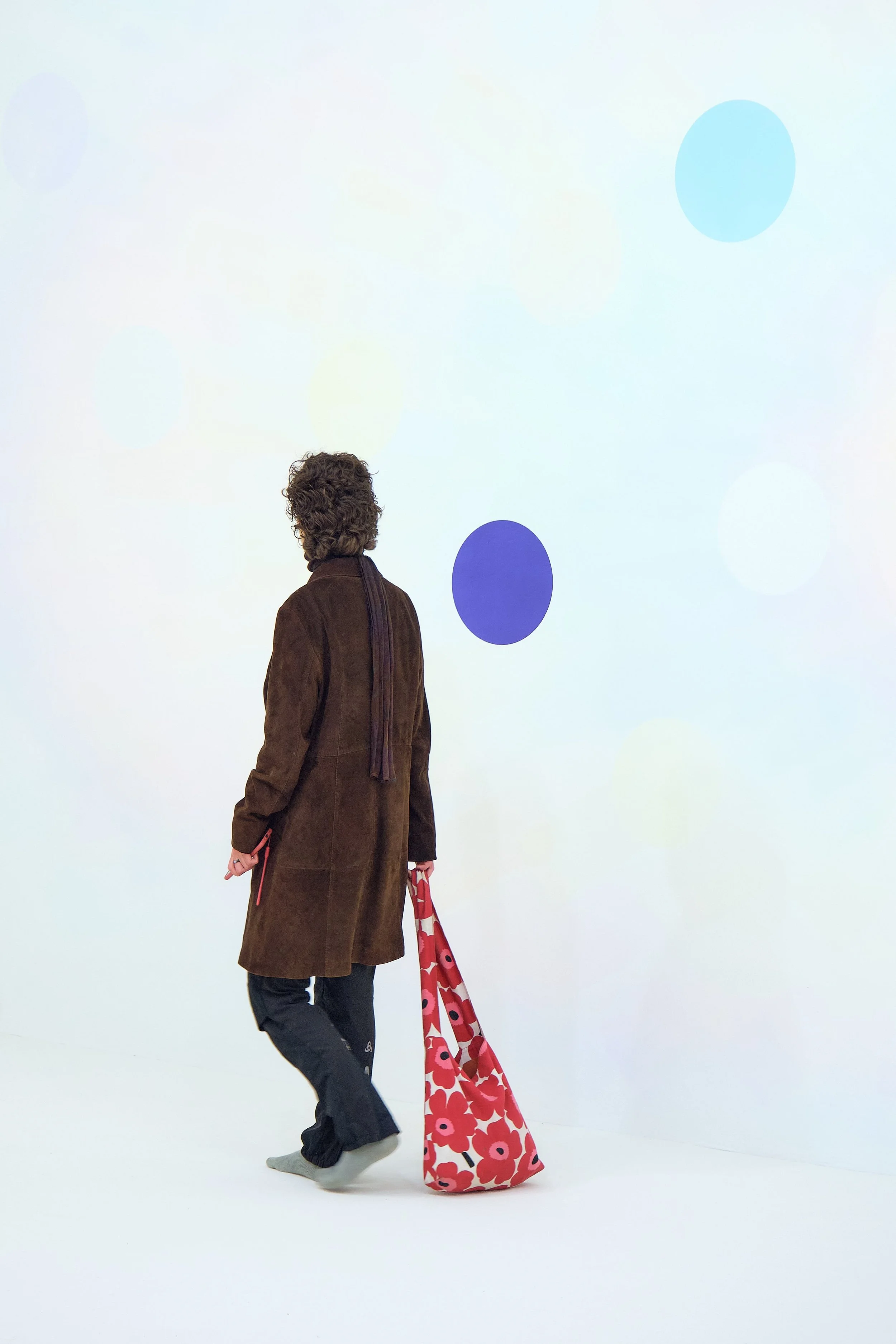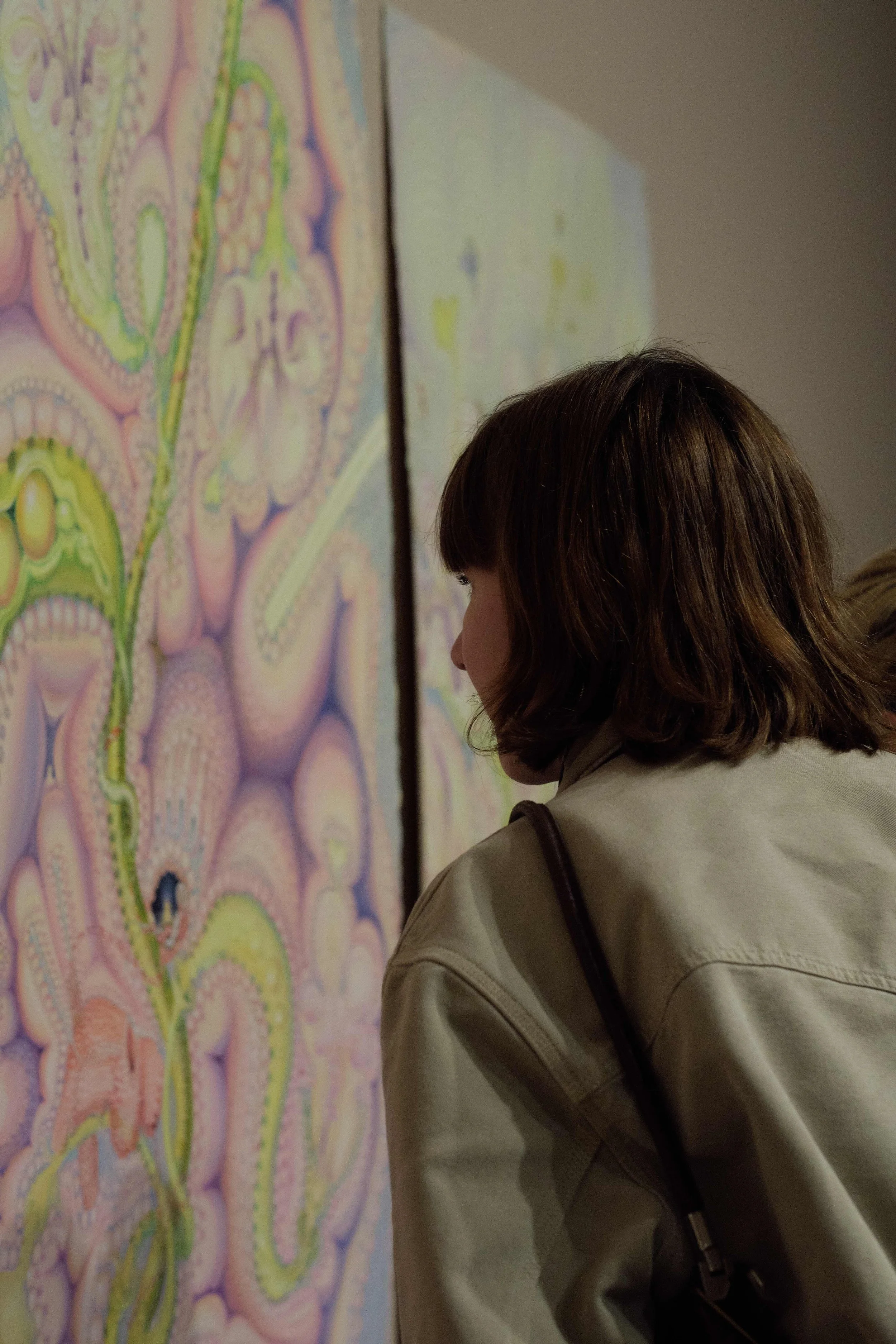Lisa Klosterkötter
Lisa, please introduce yourself:
Hi, I'm Lisa, I'm a curator based in Cologne. My focus is on collaborative work, developing exhibitions and formats for public spaces in close collaboration with artists, curators, initiatives, different communities and cultural and socio-cultural institutions. As interim artistic director, I have realized a one-year program at the Temporary Gallery. Center for Contemporary Art in Cologne.
© Weststern und Markus J. Feger
#1 I recently visited Embracing the Fold, the exhibition you curated at Temporary Gallery. The title immediately caught my attention — it feels poetic, intimate, and layered. How did you arrive at this title, and what conceptual threads does it bring together within the exhibition?
I was thinking about which word, sentence or metaphor could possibly bind Kinke Kooi’s and Roland Schimmel's work in one title. The embracing fold or the fold that is embraced – both gestures appear in the works of both artists.
The title also refers to the text The Fold by French philosopher Gilles Deleuze. He examines how baroque thought is not linear but curved, folded, and multilayered. The world does not consist of fixed and self-contained things but of a continuum of transitions, of foldings – like fabrics that can be folded into an infinite number of creased layers.
I was finding these ideas in Kinke Kooi's and Roland Schimmel's work, in different but overlapping ways.
The fold appears in Kooi’s works as folds of shame and simultaneously as folds of self-empowerment. Depicted as a vaginal fold, a wrinkle, or a belly crease, it dissolves stereotypical ideals of beauty as well as unsettles the taboo of the female desirous body, which has been suppressed and made invisible for so long. The fold also functions as a hiding place, a retreat, and a shelter. Kooi often describes how in the early 1980s, when she was studying at the Art Academy in Arnhem, her decorative, curved, excessive forms opposed the idea that minimalism and rationality were superior. This resistance resulted in a strong position that still permeates every pore of her rich body of work today, reappropriating what has historically been dismissed as a “feminine” aesthetic. For her, this process also involved feelings of shame and an impulse to withdraw, which she continues to thematize in her work.
© Viola Halfar
Kooi’s work engages with the fold in a way that relates to body awareness and also to the challenging of hierarchies: the way the elements in her work intertwine and expand suggests a non-hierarchical, interconnected world, in which no singular form dominates – this can be read as a metaphor for feminist ideals of relationality and care and builds a bridge back to Deleuze, who, however, omits this aspect of the “care-work of the fold”.
Roland Schimmel’s paintings take up the fold less in its physical materiality and more in its perceptual dimension of expansion and contraction. His work does not only exist on the surface, but folds into the retina, into memory, into the nervous system, and renders perception an unfolding process. The way in which colors and color transitions dissolve edges and create optical instability points towards a folding of space and time in which vision is not fixed but constantly shifting. The dynamic play of light and perception in his work creates an intensity similar to how Deleuze describes the baroque fold as energy that moves through space and bends reality itself. Schimmel’s work folds perception into the body and anchors it in memory, afterimages, and neurological processes.
Just as Kinke Kooi’s folds articulate a feminist ethic of care, equality, and embodiment, Schimmel’s perceptual folds, by dissolving fixed visual structures, may also hold a kind of radical openness, a suspension of control over vision itself. This embrace of the fold brought about collectively through artistic processes, points to a fluid way of experiencing the world –one that defies the strict categories of its time, rigid hierarchies, and fixed perspectives.
Left: Embracing the Fold. Kinke Kooi and Roland Schimmel, spatial concept and furniture by Astrid Kajsa Nylander and Pål Rodenius, Installation view, Temporary Gallery. Centre for Contemporary Art, Cologne (Germany), 2025, Photo: Simon Vogel
Right: Roland Schimmel, Untitled, 2010, Installation view Embracing the Fold. Kinke Kooi and Roland Schimmel, Temporary Gallery. Centre for Contemporary Art, Cologne (Germany), 2025, Photo: Simon Vogel
#2 You lived with Kinke Koi and Roland Schimmel during the preparation of this exhibition — how did that close personal insight into their working and living dynamics shape your curatorial approach?
I have been visiting them many times in their living and studio house in Arnhem (NL) over the past years. Spending time together, having long conversations about their work, but also generally being in seemingly endless talks about topics that interest us, has certainly fed into the exhibition and its facettes and have greatly influenced and enriched me and my thinking about art in many ways.
#3 Embracing the Fold brings together two artists who are also a couple, exhibiting exclusively side by side for the first time. What kind of dialogue or tension did you observe between their practices — and how did you choose to frame that?
I had the feeling, it made a lot of sense for the two, who have developed their work so closely side by side over the last decades, to create a space together that envelops the works, their differences and symbiosis.
For me, the works of Kinke Kooi and Roland Schimmel form a breath together, a two-step movement that flows towards one another: contracting and expanding, folding and smoothing out again, shrinking and swelling again, drawing in and spreading out. The relationship between Kooi’s and Schimmel's works is also like a reversible figure, an inversion, a reversal from large to small, from the outermost to the innermost and back again. Roland Schimmel’s precisely placed, molecular circular forms find their counterparts in Kinke Kooi’s hand-drawn round pearls, berries, and fractals, in the natural and artificial objects and structures of her paintings. It is as if a temporal shift or a degree of abstraction has come between the two.
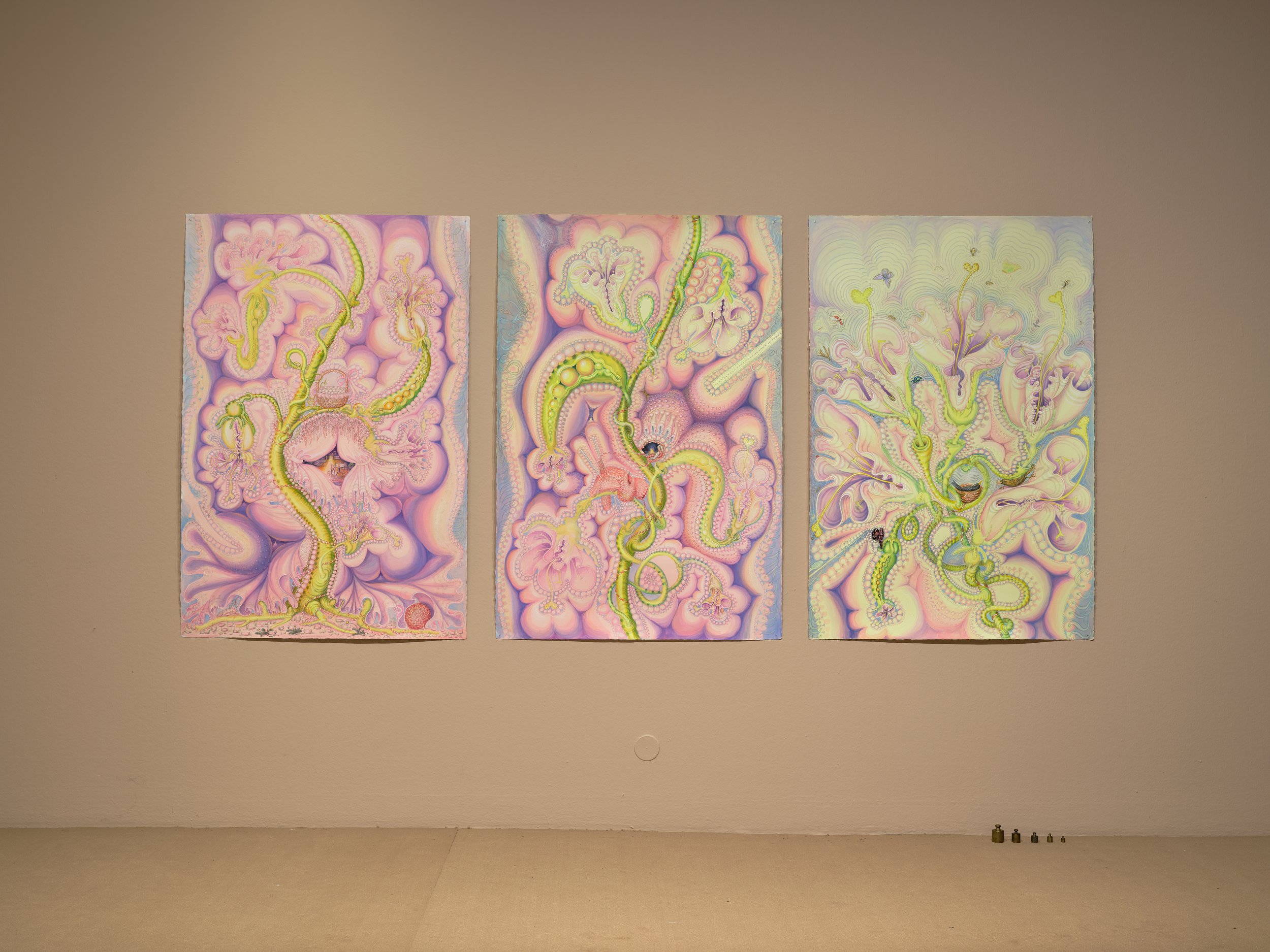
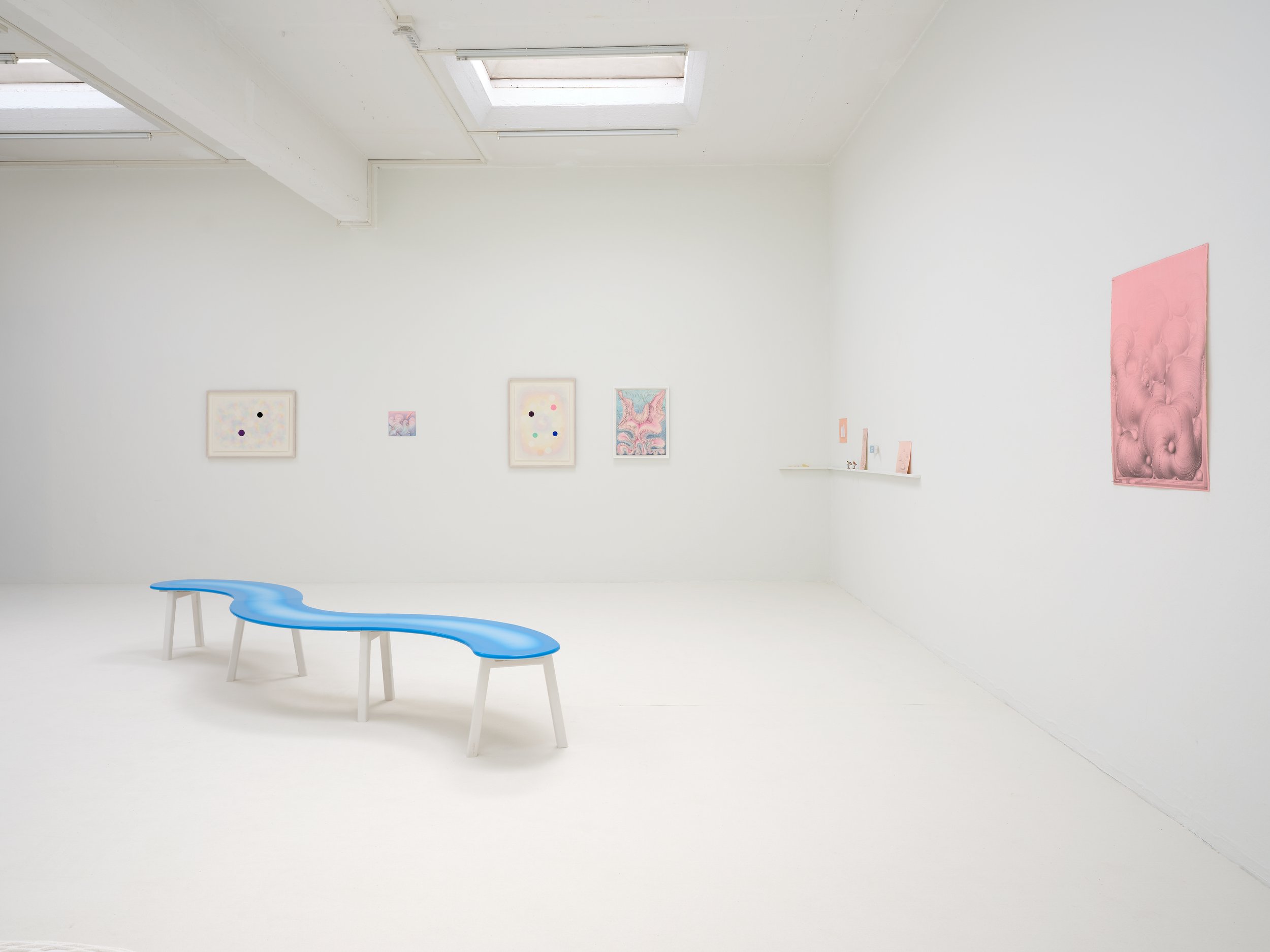
01: Kinke Kooi, Hospitality, 2025, Installation view Embracing the Fold. Kinke Kooi and Roland Schimmel, spatial concept and furniture by Astrid Kajsa Nylander and Pål Rodenius, Temporary Gallery. Centre for Contemporary Art, Cologne (Germany), 2025, Photo: Simon Vogel
02: Embracing the Fold. Kinke Kooi and Roland Schimmel, spatial concept and furniture by Astrid Kajsa Nylander and Pål Rodenius, Installation view, Temporary Gallery. Centre for Contemporary Art, Cologne (Germany), 2025, Photo: Simon Vogel
#4 The exhibition design plays a crucial role in the experience of the show — from the soft rose-toned rooms to the stark white one, and the shared children's-height space in between. Can you tell us more about your collaboration with Astrid Kajsa Nylander and Pål Rodenius, and how the scenography developed?
The artist Astrid Kajsa Nylander and the interior architect Pål Rodenius are based in Sweden. They have jointly developed a furniture and spatial concept for Embracing the Fold. Drawing from Nylander's painting and Rodenius' design practice, they explored ways to bring their respective artistic expressions into resonance with the works of Kinke Kooi and Roland Schimmel. The design of a series of benches is based on the thread and button motif from Nylander's series Minijobs – a series of paintings the artist has been working on since 2016. Inspired by childhood memories of her grandmother's button collection, the button becomes a central element – ordinary and functional, yet also a small technical marvel that connects and holds things together. Buttons also appear in Kinke Kooi’s drawings and find an echo in Roland Schimmel’s circular afterimages.
Collaborating with the two was a key step in developing an immersive spatial concept. One of my initial ideas was to create a space that would reflect the microcosms in Kinke Kooi's and Roland Schimmle's works as a comprehensive and enveloping spatiality and, so to speak, enlarge them and unfold them into the room. It was very enriching to carry out this approach with the two exhibition designers.
#5 The central room, designed at children’s height and featuring elements from both artists, creates a moment of overlap. How do you interpret this “shared fold” — is it a space of synthesis, friction, or something else entirely?
For Kinke Kooi and Roland Schimmel the child's view towards art plays an important role. That's why we thought about including a children's room. I have also observed that children like to have their own safe space in exhibitions, which they can temporarily occupy for themselves.
Together with the cultural mediator Ana Manhey Ahrens, we are also realizing a summer holiday program for children in the exhibition, where this room will also play a specific central role.
© Jakob Engel
#6 What role does space play in your curatorial practice? And what would an ideal space for curating an exhibition look like for you — physically, atmospherically, maybe even institutionally?
The optimal space for my curatorial work is the public space. Here I have the feeling that I can reach very different people through artistic interventions and get into the most diverse exchange about art. Public space is very plural, very vulnerable and wounded and very political, which makes it a fitting context for art, which also brings these components.
#7 How do you see the role of an architect in today's society?
Making existing things more sustainable, unblocking closed objects, not losing sight of fantasy.
#8 How does your environment influence your work?
The environment is always the first thing that inspires me to initiate a project. I rarely look at where I can place a topic, but rather which topic can be developed relating to an environment, an architecture, a community, a history, and how this can be explored through artistic strategies.
#9 Three things that inspire you at the moment?
The Ruhr region, surrealism and treasure troves.
#10 What do you currently read, watch, listen to?
In dialogue with the exhibition Embracing the Fold, a literature program with the title Hospitality Between Folds is taking place at Temporary Gallery. The series is curated and moderated by the author Maria Babusch. She has invited authors such as Yohan Holtkamp and Amuna Wagner, for readings and lecture performances. In this course, I got to know new literary positions. In this framework we also worked together with the Persian bookshop and publishing house Forough Book, which is located in Temporary Gallerie’s neighborhood in Cologne. Through this cooperation I got to know more about Persian poetry, which is very enriching and inspiring.
© Viola Halfar, © Jakob Engel
Links
Instagram: @lisaalice_klosterkoetter
website: temporarygallery.org
Photo Credits: @ Viola Halfar, © Jakob Engel, © Simon Vogel, © Weststern und Markus J. Feger
Interview by Caroline Steffen


